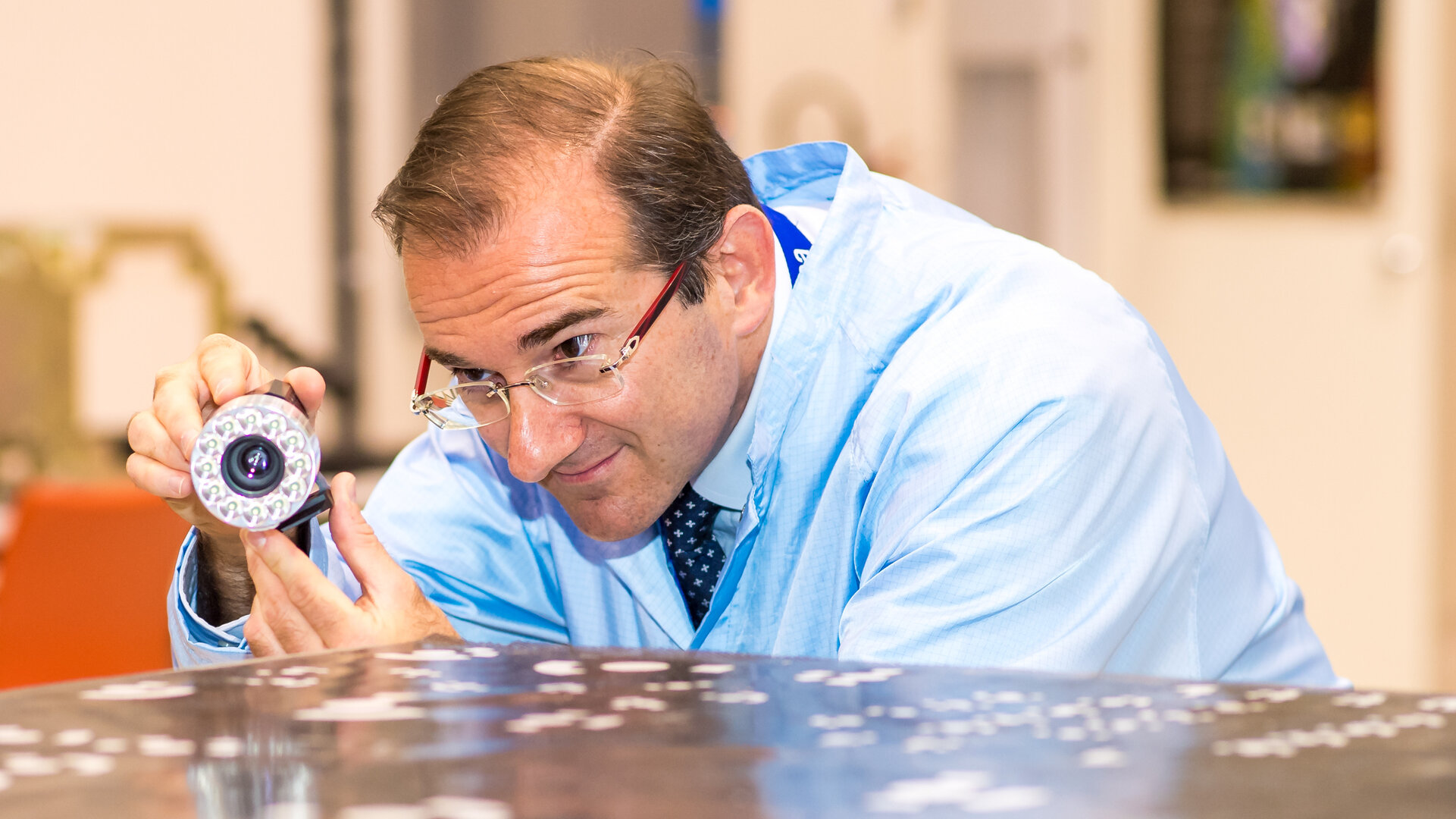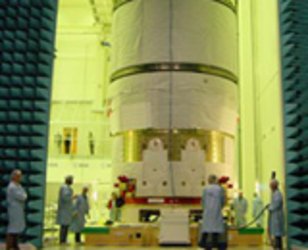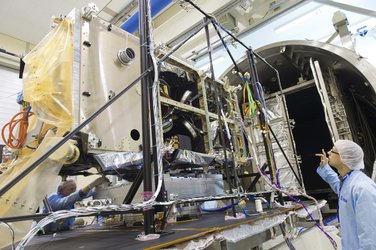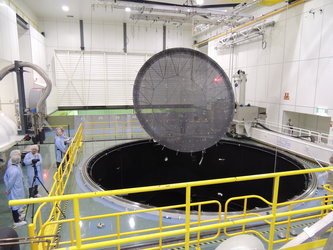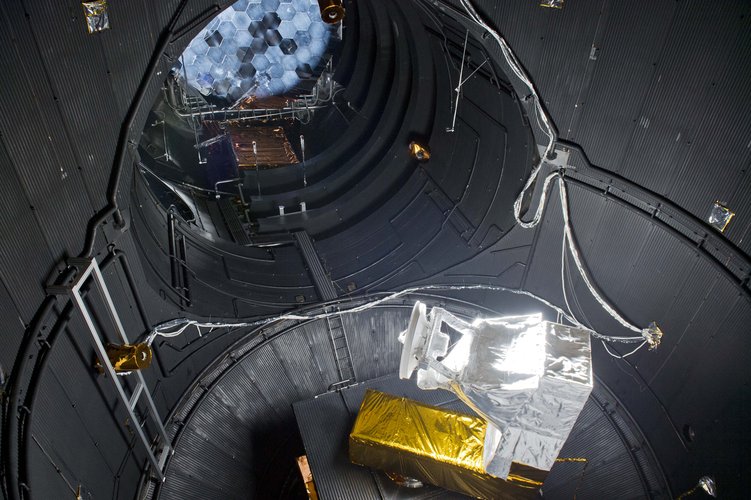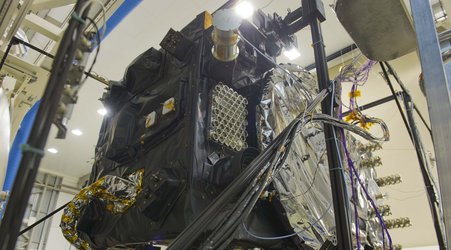Lights, cameras, action for satellite testing
Alessandro Cozzani, Head of Engineering Services Section, ESTEC Test Centre
Satellites in airless space must endure high and low temperatures simultaneously, as some parts are exposed to sunlight and others remain in shadow. Such uneven heating risks triggering ‘thermoelastic’ deformation, misalignment or even structural stability issues.
Thermal engineers variously apply items such as multi-layer insulation, heaters, heat pipes or radiators to minimise such effects, and deliver ‘thermal balance’: meaning that optimal temperature levels persist throughout the satellite. Thermal behaviour can be very hard to model however, so test simulations need to be performed in vacuum chambers – which usually shows a lot of things we didn’t expect.
We rely on cameras to gather data during these tests: ‘photogrammetry’ cameras measure tiny deformations in a structure. Two cameras are usually sufficient to derive a three-dimensional view of mechanical movements. Improving the quality of photogrammetry test instrumentation is what we in the ESTEC Test Centre Engineering Services section have been working on from 2002 onwards, through a series of activities based on internal R&D, technology investments and ESA project support tasks.
There was plenty of room for improvement: in the late 1990s film-based cameras were still widely used by the photogrammetry community; at the ESTEC Test Centre in 2002, bulky Rollei cameras, enclosed in heavy containers to guard against vacuum, were the state-of-the-art.

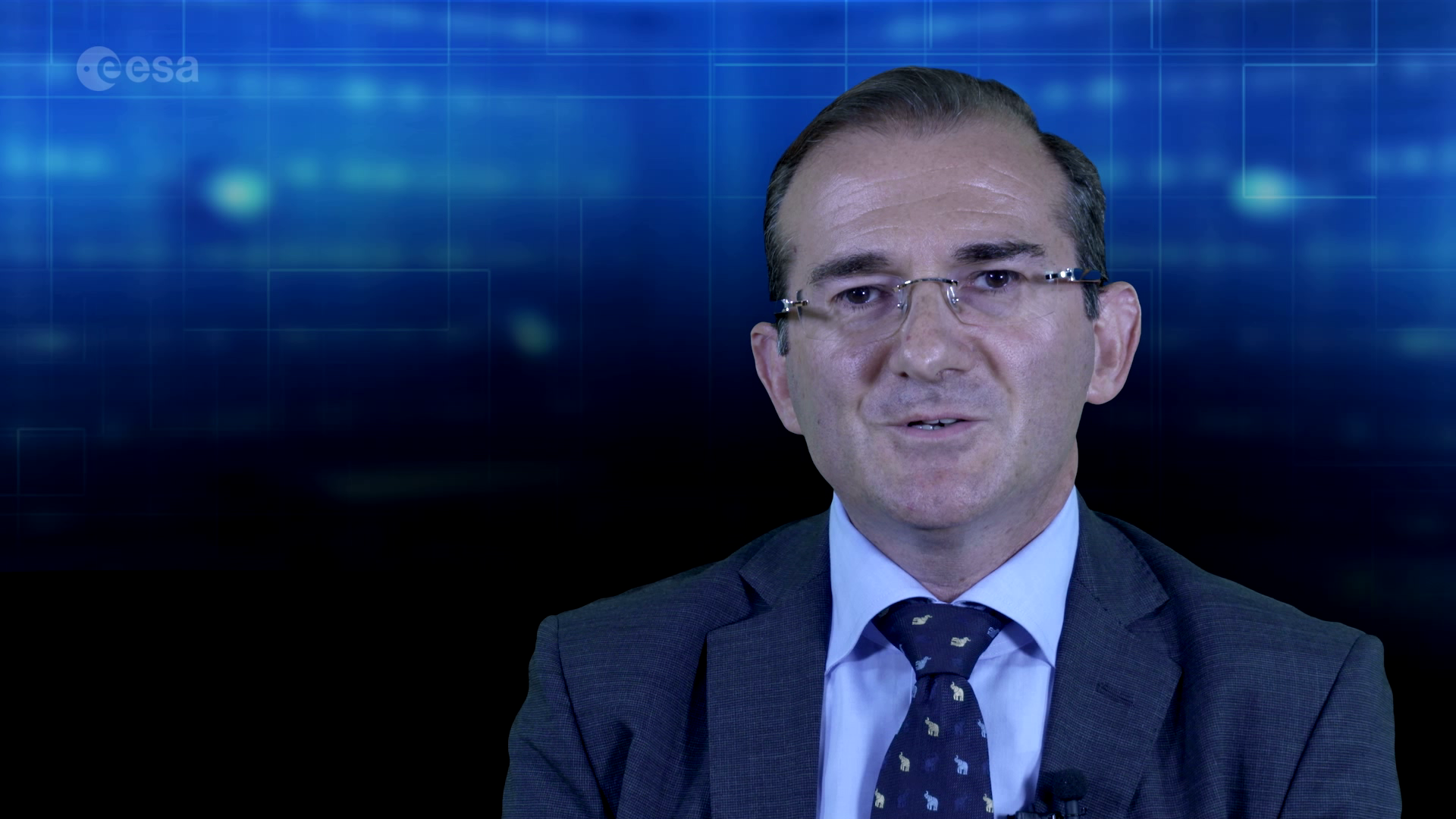
Access the video
We had to perform highly-precise thermoelastic testing of the Herschel space telescope’s main mirror, made of novel silicon carbide ceramic and 3.5 metres in diameter – the then-largest mirror built for space. The tight requirements to minimise thermal perturbation to the test specimen and of high measurement accuracy gave us an opportunity. What we did is take existing space-qualified micro-cameras, already flown on some ESA missions – Beagle-2, Proba-2 and Smart-1. These didn’t need any protection against thermal-vacuum while housing very small CCDs inside.
We developed a computer-controlled system to remotely scan the test specimen and universities gave us support for the development of the software for image acquisition and processing . The system achieved an accuracy of 30 micrometres, millionths of a metre, a big success at the time.
As a next step we looked at spinning-in commercial video cameras, very compact in size, but with much larger CCD or CMOS pixel arrays, offering enhanced imaging resolution. So we built small and light protective containers around them, devised imaging and control software and added supporting harnesses. Like the satellites themselves, these cameras also needed thermal control systems, to keep their structure stable for maximum accuracy.
Presently we are developing a system of canister free micro-cameras based on retro-fitted commercial hardware enabling a high measurement accuracy. Inserted in test chambers, these cameras will end up delivering results predicted in the order of 5 micrometres per metre.
The challenge here is that infrared camera detectors are cooled to cryogenic levels – to keep cooler than the infrared radiation they are detecting
Responding to the needs of projects including BepiColombo and Solar Orbiter, we began working on ‘thermography’ infrared cameras as a novel means of mapping surface temperature variations. Contact sensors can’t deliver sufficient spatial resolution, missing out on phenomena like deficiencies within multi-layer insulation, surface temperature variation and detection of hot spots. Again, this was a matter of adapting commercial cameras. The challenge here is that infrared camera detectors are cooled to cryogenic levels – to keep cooler than the infrared radiation they are detecting – thus dissipating heat and the camera and windows/lenses need a tight temperature stability for calibration reasons, so this required a complex closed-loop thermal control system.
These were used for the first time to assess the thermal performance of the Gaia star mapper’s structural and thermal model sunshield, even detecting the deployment sequence as its deployment bolts ignited in the dark. They’ve also been used in the thermal balance–thermal vacuum testing of BepiColombo’s spacecraft modules, and for monitoring the ongoing temperature during the qualification of the solar cells under 10 solar constants for 4000 hours overall.
Our other R&D includes infrared ‘ray tracing’ simulations of test environments, to really foretell what we should see during a 3D thermography testing thus applying measurement corrections, and a laser dot projector system to train reference grid points across a test item in thermal vacuum – many satellites cannot be contaminated by sticky targets. A key point is that all these innovations get shared with industry, and the other European test centres, this sharing of experience is a core function of the Agency.


